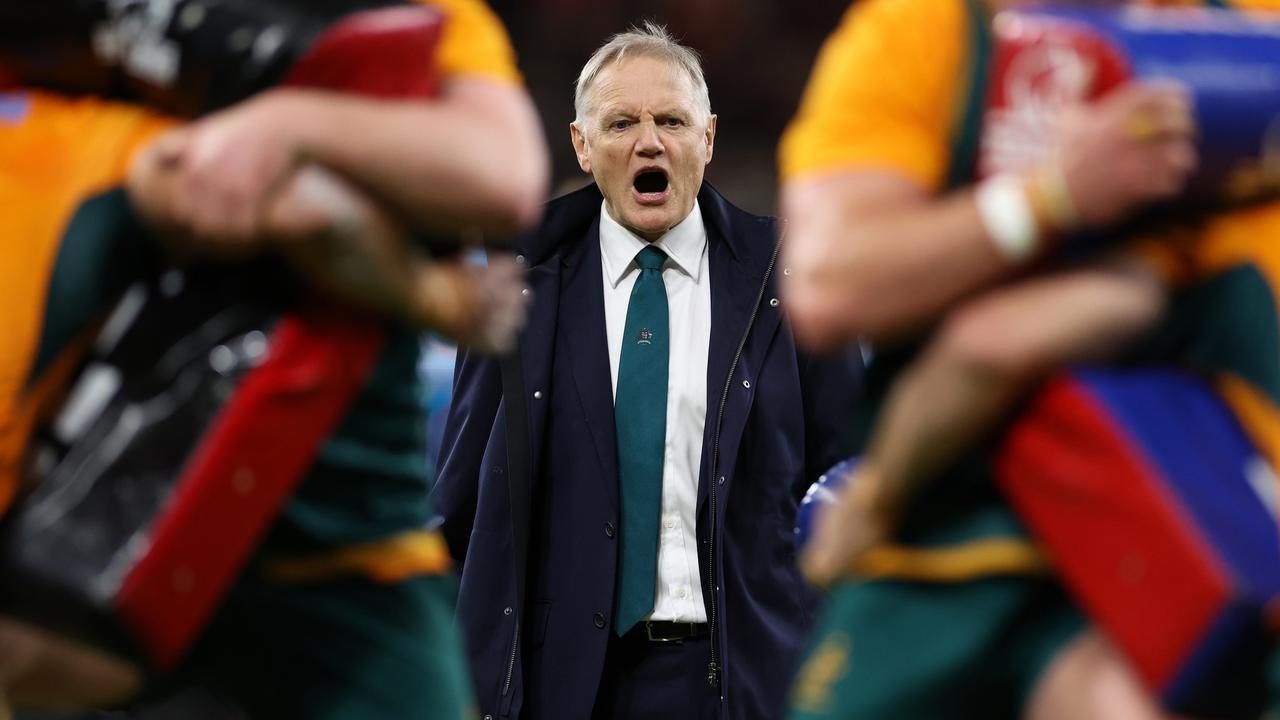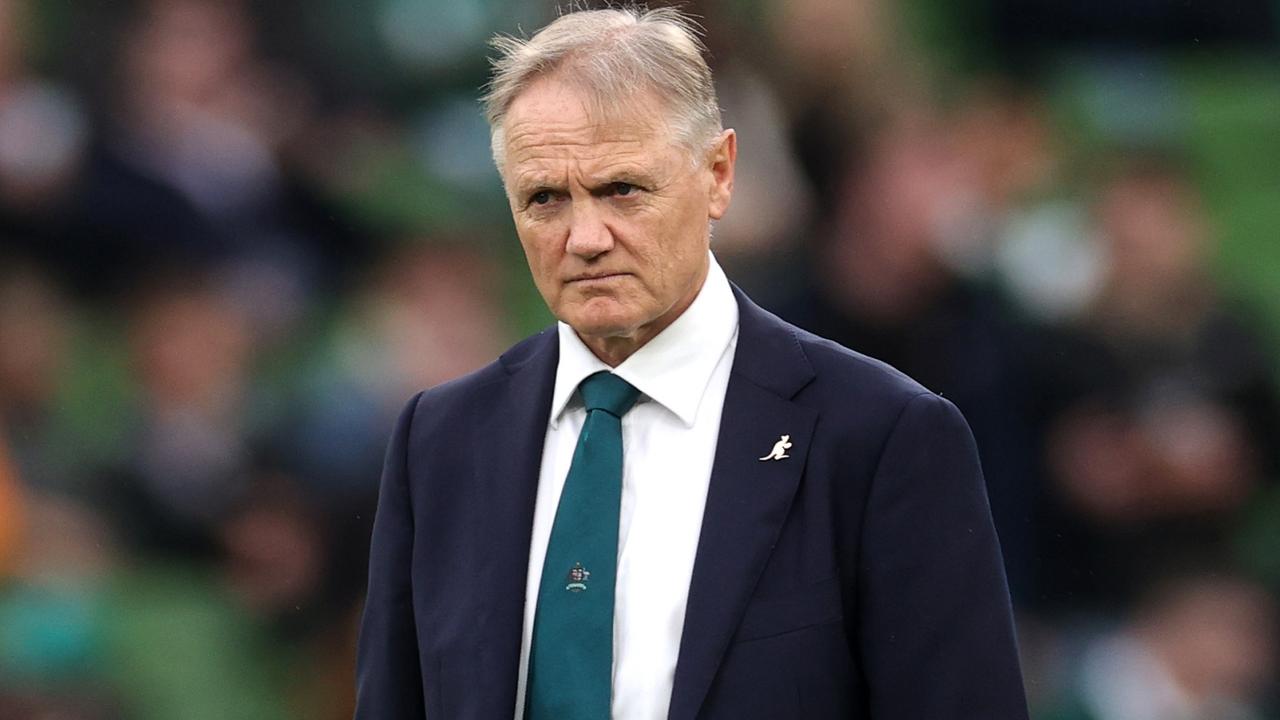Undefeated ‘Churchie’ squad arguably the best schoolboy football side of all time
Arguably the greatest schoolboy footy team of any code, this team forged stars who have done it all - their coach reveals the attributes of success.
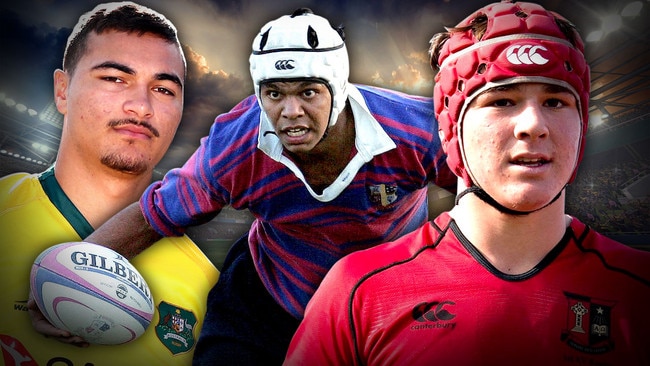
Rugby
Don't miss out on the headlines from Rugby. Followed categories will be added to My News.
Izaia Perese’s debut for the Wallabies recently only adds to the aura of “Churchie’s” unbeaten first XV of 2014.
The Anglican Church Grammar School side went through the Brisbane GPS competition undefeated, with an average scoreline of 50-13 in an incredible exhibition of dominance.
A quick scan of the team sheet shows the quality contained in the side.
Ponga, Wright, Su’a, Perese, Scott-Young, Croft.
Watch live coverage of The Autumn Nations Series with beIN SPORTS on Kayo including every Wallabies & All Blacks match. New to Kayo? Start your free trial >
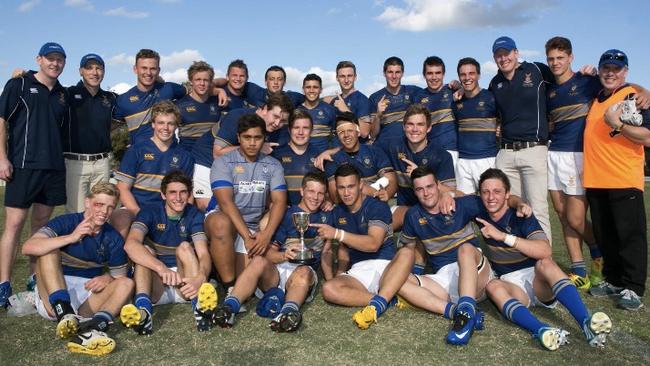
The team is a who’s who of the Australian rugby codes, including Wallabies, State of Origin players, Super Rugby representatives and NRL players.
The 1979 Australian schoolboys rugby team is regarded as one of the best sides of all time given its star-studded line-up included future rugby league immortal Wally Lewis and Wallabies the Ella brothers - Mark, Glen and Gary - Michael O’Connor, Tony Melrose, Michael Hawker, Chris Roche, Tony D’Arcy, Shane Nightingale and Dominic Vaughan.
But that was a representative side.
Six members of Keebra Park High School’s team of 2016 - runner-up in the national schools competition - have made their NRL debuts, including Origin players Payne Haas, David Fifita and Moeaki Fotuaika.
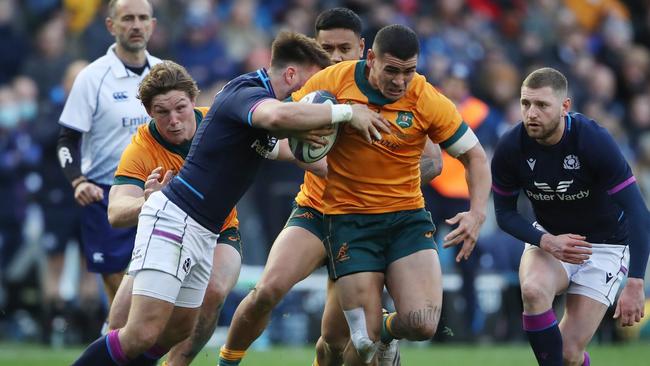
And more recently, Melbourne’s Caulfield Grammar provided four players to the 2020 draft including no.3 pick Will Phillips, and no.7 pick Elijah Hollands.
But the Churchie side is remarkable not just for the number of players that went on to professional careers, but the level of football they have played.
Perese is not the first member of the team to win a Wallabies cap - that honour goes to backrower Liam Wright who played his first Test against the All Blacks at Auckland’s Eden Park in 2019.
Wright is now the Queensland Reds captain and his teammates include Angus Scott-Young, a Wallabies training squad member in 2019 and Richie Asiata, an Australian schoolboys and Junior Wallabies representative who made his Super Rugby debut this season.
Kalyn Ponga, Jaydn Su’a and Brodie Croft played for the Junior Kangaroos and Ponga and Su'a has represented the Maroons in the Origin cauldron, while another five players kicked on in rugby making at least Junior Wallabies level or establishing professional Super Rugby careers.
Coach Jason Gilmore says the trio’s transition to rugby was a complete success.
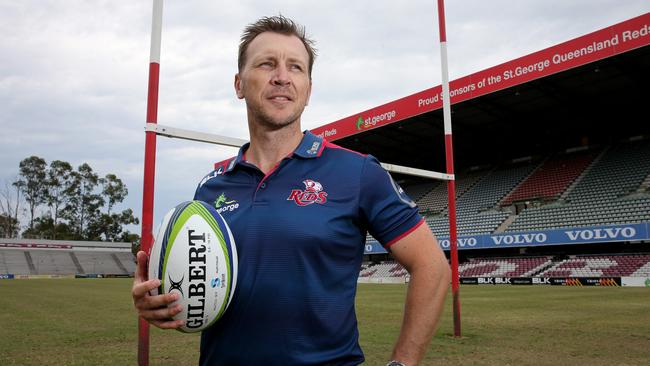
Gilmore said the success of the side was no surprise given their competitive hunger.
“We spent a fair bit of time putting the squad together and in 2014, the expectations were that we would win it, we really set out to win it,” said Gilmore, who went on to coach the Junior Wallabies before joining the Waratahs program, where he remains on the coaching staff for the 2022 Super Rugby season.
“They were completely different right from the get-go,” he said.
“The reason we wanted Mack Mason and Perese and these guys is they just had this insatiable appetite to be the best that they could be.
“That’s what separated them from the others.
“Other kids could be skilful but those guys genuinely worked the hardest of anyone I’d seen at that age and you could tell their attitude and work ethic to go with their talent was the reason they were going to make it.”
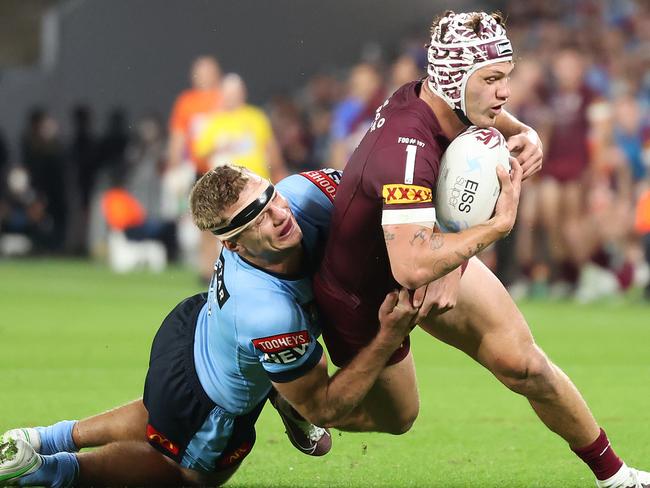
Churchie 2014 First XV standouts
Liam Wright - backrower
(Wallabies 5 Tests; Queensland Reds captain; Junior Wallabies)
Izaia Perese - outside back
(Wallabies 1 Test; NSW Waratahs/Queensland Reds; Brisbane Broncos; Australian Schoolboys; Junior Wallabies)
Kalyn Ponga - outside back
(State of Origin: Queensland Maroons; Australian nines; Maori All Stars; NRL: Cowboys, Knights; Junior Kangaroos)
Jayden Su’a - forward
(State of Origin: Queensland Maroons; Samoa; NRL: Broncos, Rabbitohs, Dragons; Junior Kangaroos)
Angus Scott-Young - backrower
(Wallabies extended squad 2019; Queensland Reds; Junior Wallabies)
Harry Hockings - lock
(Japan Top Rugby 2020-present; Queensland Reds; Junior Wallabies)
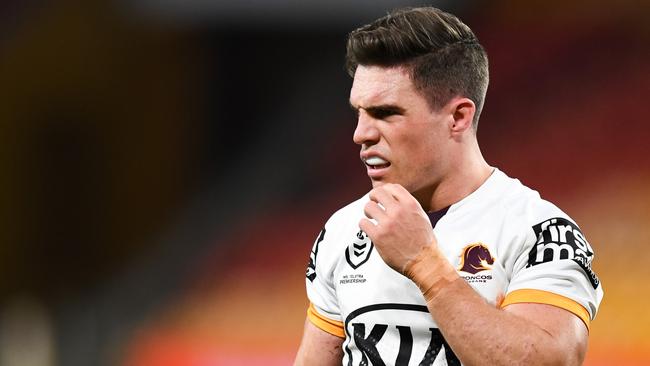
Brodie Croft - half
(NRL: Storm, Broncos; from 2022 English Super League: Salford Reds; Junior Kangaroos)
Mack Mason - flyhalf
(Churchie 1st XV captain 2013-14; Super Rugby - Waratahs; US Major League Rugby; Junior Wallabies)
Richie Asiata - front rower
(Super Rugby - Reds; Australian Schoolboys; Junior Wallabies)
Sam Wallis - backrower
(Super Rugby - Rebels/Reds)
Harley Fox- No.8
(Super Rugby - Melbourne Rebels program 2016-17; Australian schoolboys captain; Junior Wallabies)
Harry Nucifora - scrumhalf
(Junior Wallabies)
Wallaby stranglehold: QLD schools dominating NSW
Queensland’s traditional rugby strongholds are producing champions at a remarkable rate, with the state’s top schools dominating the pathway to a gold jersey.
A News Corp investigation into the top rugby schools in the country this century has found Queensland’s traditional GPS nurseries have contributed almost a quarter of the players that have turned out for the Wallabies this century.
A closer examination of the numbers shows NSW still leads the overall tally, with 80 of the 191 players to have debuted since 2000 completing their schooling in the state, with the representatives coming from the length and breadth of the state.
Queensland has contributed 69 players - 46 of them coming from the top 11 schools, compared to just 26 in NSW.
The ACT has produced 11 Wallabies, including four from famed nursery St Edmund’s College, the school ranked 10th on the list this century.
While Queensland’s representatives are concentrated in the more traditional rugby nurseries, it does not necessarily point to the sport being an elitist pursuit.
With school rugby competitions disappearing from some regional Queensland areas in particular, recruitment by the big rugby schools has helped foster talent that may have otherwise been lost to the game.
In a sign the sport is spreading its roots, seven players also came from Victoria, four from Western Australia and one from Tasmania, while several others were born and completed their schooling overseas.
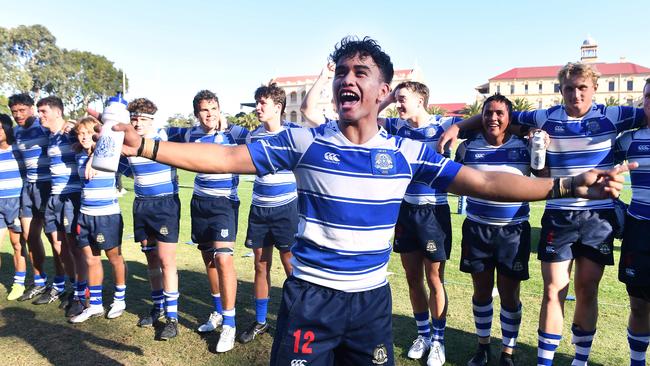
Rugby Australia national talent manager Adrian Thompson said the spread of talent was always evolving but the overarching message was that schools played a key role, along with junior clubs in developing future internationals.
“We can talk about schools that produce Wallabies but I think ultimately, Wallabies produce Wallabies because of who they are and their experience and background,” he said.
“So a lot of those kids who will come through a Nudgee (St Joseph’s College, Nudgee), or a BBC (Brisbane Boys College) or Joeys (St Joseph’s College, Hunters Hill), they will also have played junior footy at Randwick or Wests or Easts.
“So in a sense those clubs contribute as well.
“There will be some of those players who have been playing rugby at their local club since they were seven and there’ll be some who are rugby league kids who went to TSS (The Southport School) when they were 15 and became a Wallaby.
“So they have different backgrounds, all of them.”
The Australian Schoolboys was absorbed under the Rugby Australia development umbrella in 2019, with the team now known as the Australian Schools and U18s side and chosen from a number of tournaments and camps rather than a week-long selection carnival.
The move was designed to ensure that players from all schools have the chance to represent their country at the highest level, while taking pressure off a selection tournament, putting the focus back on enjoyment of schoolboy football.
“What we’re determined to do is make sure we capture that talent and give those boys the best chance to develop at their own rate and give individual schools and competitions some clear air where they can just focus on playing,” Thompson said.
State schools closing Wallaby gap
Private schools remain the great nursery of Australian rugby but public schools are providing more players than evert before to the Wallabies, a News Corp investigation has showed.
Of the 191 players to have debuted for the Wallabies this century, almost a third were educated either exclusively, or for at least part of their high school career, at state institutions.
The St Joseph’s Colleges have maintained their reputation as a great factory for the game, providing 15 per cent of all players to have debuted for the Wallabies this century.

Thirty players were schooled at either the Marist Brothers’ St Joseph’s College Hunters Hill (Joeys), or Queensland catholic schools St Joseph’s College, Nudgee (Nudgee), or St Joseph’s College, Gregory Terrace (Terrace).
Joeys tops the list with 12 players, just ahead of Nudgee, with 11, while Terrace comes in at fourth place, with seven players, level on players provided with Brisbane State High School but ranked higher on overall Test appearances.
Joeys takes top spot with their claim over Tasmania’s first Wallaby, Adam Coleman, who attended the school for one term in Year 11.
State High is one of two public schools in the top 10 - a top 11 eventually - after Narrabeen Sports High School made the cut after providing four Wallabies players this century, the same number as highly regarded Canberra nursery St Edmund’s College, which nurtured the talent of 100-cap player Matt Giteau.
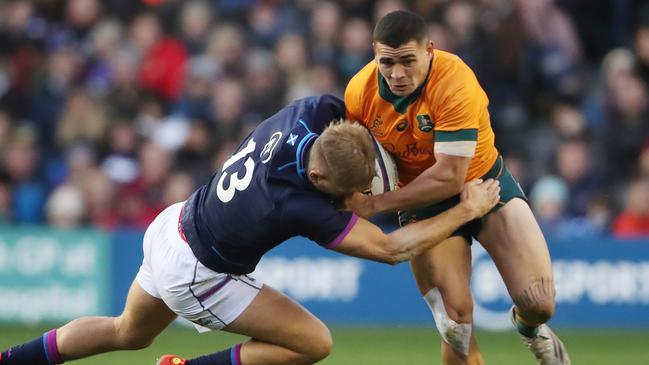
Comprised only of players to turn out for the Wallabies this century, the list starts with Wallabies 758-761 - Fletcher Dyson (John Paul College), Stirling Mortlock (The King’s School), Sam Cordingly (St Patrick’s Marist College) and David Lyons (Hurlstone Agricultural High School) - who made their debuts against Argentina in Brisbane on June 17, 2000.
The 191st player to represent the Wallabies this century was Anglican Church Grammar School (Churchie) back Izaia Perese, who made his debut against Scotland on Saturday night.
Perese’s addition pushed Churchie to seventh place on the list, just ahead of famed rugby nursery The King’s School.
In addition to a greater proportion of public school students than seen previously, several players were born and educated overseas, in regions including Fiji, New Zealand, Tonga and South Africa.



